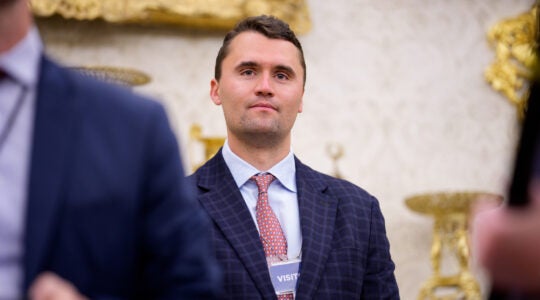The spring issue of Contact: The Journal of the Steinhardt Foundation for Jewish Life enlists a dozen of the foremost thinkers on Jewish philanthropy to talk about the state of fund raising. With the Steinhardt Foundation’s permission, The Fundermentalist will republish over the next two weeks pieces from the likes of the foundation’s president, Bob Aronson, the president of the Andrea and Charles Bronfman Philanthropies, Jeffrey Solomon, philanthropy guru Phyllis Cook and academic Amy Sales.
In this piece, Solomon, who also is the co-author of the recent book “The Art of Giving” talks about the changing landscape of Jewish giving.
JEWISH FUNDRAISING 1.0 IN A 3.0 PHILANTHROPIC WORLD
by JEFFREY R. SOLOMONIn the century since the arrival of large numbers of Jews from Eastern Europe, the American Jewish philanthropic scene has been an extraordinary success story that has combined Jewish and American values. Jewish philanthropy has taken root in this country because it is based on the timeless values of B’Tzelem Elohim, the infinite value of each human life; tikkun olam, our personal responsibility in completing and healing the world; and kol Yisrael arevim zeh bazeh, all Jews are responsible one for another.
This aligns quite well with the American concept of “a more perfect union” and faith in the voluntary sector — that citizens coming together can achieve societal good better than government.
The 20th Century brought extraordinary, existential pain to the Jewish community, culminating in the Shoah and followed closely by the collective emotional response to the creation of the State of Israel. These emotional connections permeated Jewish life throughout the globe and were the underpinnings of modern Jewish philanthropy. In many ways, the great philanthropic enterprises such as the UJA-Federation system, the Jewish National Fund, Hadassah and countless others were built on six 20th Century realities:
The Jewish community was affluent;
Jews self-identified as Jews;
Jews felt a sense of insecurity for their brethren discriminated against here or at risk in various parts of the world;
Jews felt an organic connection to the development of the State of Israel;
Jewish DNA was tied to the kehillah, or community governance system of the communal past, and therefore Jews appreciated the role of central charities;
The other great American philanthropies — secular universities, museums and hospitals — were less interested in Jewish support because of the social discriminatory patterns that existed at that time.
Only the first of these conditions remains in effect today. The very universities that once had Jewish quotas today have Jewish presidents. Jewish identity is but one of a multiplicity of identities that we carry in our open, pluralistic society. Among younger Jews, a connection to Israel is no greater than that of all young Americans. We want to follow our dollars and are part of a society that has created “disintermediation” as a term of art. Our great secular universities, hospitals and museums are disproportionately Jewish in leadership, governance and philanthropy.
In The Art of Giving: Where the Soul Meets a Business Plan (Jossey-Bass, 2009), Charles Bronfman and I talk about the three phases of philanthropy:
Philanthropy 1.0, where people gave strictly from their hearts.
Philanthropy 2.0 (stimulated by the dotcom era), in which people were going to solve major problems and give only from their heads.
Philanthropy 3.0, where people’s hearts blended with the demands of a carefully developed strategy to achieve impact.
We believe these trends offer both risks and opportunities for Jewish philanthropy.
[[READMORE]]
The major risk is that organizations will believe that their donors will continue to give strictly from their hearts — having no expectations regarding the likelihood of their gifts improving the world. Virtually every major Jewish philanthropic organization has faced a decline in donors and maintains a greater reliance on small numbers of major donors.
These major donors constitute the last generation to have personally witnessed and/or experienced the horrors of the Shoah and the redemption in the creation of the State of Israel. As was noted in research conducted several years ago by the late Gary Tobin and me, Jewish donors of mega-gifts (more than $10 million) were overrepresented in this population by an amazing multiple of nine.
However, even among this cohort, 94 percent of their gifts went to secular rather than to Jewish causes. And the people of the Philanthropy 1.0 cohort — who don’t think about impact — are of a generation that is dying off. Today, a new generation has emerged that lacks a visceral and emotional connection to the major Jewish events of the 20th Century.
Many Jewish organizations have failed to make a case to this new generation. Clearly, an emotional connection between the cause, the organization and the donor is absolutely critical. But given the generational changes in philanthropy, today’s Jewish organizational challenge is to speak to both the donor’s heart and head.
At the same time, however, donors, especially younger donors, have grown up in an age in which information is readily accessible, inexpensive and critical to decision-making.
When a Travelocity or an Expedia allows you to look at best air fares globally, and a Kayak.com even provides an analysis of those services, why would you simply accept a warm (or, occasionally, not so warm) thank-you letter for a gift to an organization without having a sense of how those funds are making a difference? The growth in the use of information resources such as GuideStar and Charity Navigator, two tools to help donors better understand the effectiveness of charitable organizations, underscores this point.
Indeed, Charity Navigator and other such sites are today looking at ways of measuring effectiveness as dramatically as they’ve measured efficiency so that donors can appreciate the relative value of their philanthropy. Charity Navigator has efficiency measures, ranking organizations with zero to four stars. It is painful to see how many of the 247 Jewish organizations listed by Charity Navigator, including some of the major names in Jewish philanthropy, have only one or two stars.
As we look generationally, we see these challenges grow exponentially. The younger generation has been wired (or is wireless) from birth. Its expectations for information are even more significant. The pyramidal social hierarchy, which has helped so many Jewish charities in the past, has been replaced by a far flatter system of social networking. Consequently, giving that came from the strength of relationships with community leaders is on the decline. This is the most self-confident Jewish generation in history; it will support self-confident, competent organizations. This generation is far less likely to define its philanthropy from a sense of self-taxation, responsibility or guilt.
As with any set of challenges, these variables represent enormous opportunity. Those organizations that are learning how to present their work in compelling and new ways are growing both in the number of donors and in the total dollars raised. As we look at the enormous growth of organizations such as the American Jewish World Service, Jewish Funds for Justice, Birthright Israel Foundation and others, we see how these trends can be used to create a better future, one that continues to be built on timeless Jewish values and on the unique role of philanthropy in America. Transparent, powerful, compelling Jewish organizations will continue to set the trends and build a meaningful future based on the beliefs and heritage that brought us to this wonderful moment.
Jeffrey R. Solomon is President of The Andrea & Charles Bronfman Philanthropies. Reprinted with permission from The Steinhardt Foundation for Jewish Life.
JTA has documented Jewish history in real-time for over a century. Keep our journalism strong by joining us in supporting independent, award-winning reporting.





